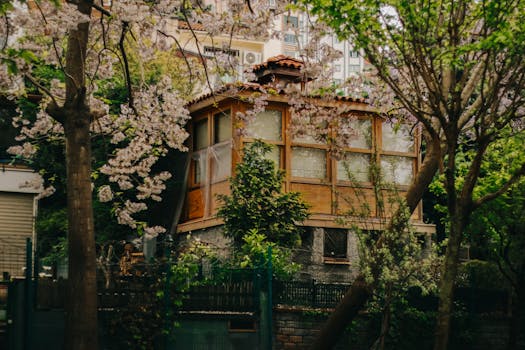
Urban Green Spaces: The Future of Outdoor Living in European Cities by 2025
Urban Green Spaces are becoming increasingly important in European cities, and it’s easy to see why. As the world becomes more urbanized, the need for green spaces has never been more pressing. Not only do they provide a peaceful escape from the hustle and bustle of city life, but they also play a crucial role in maintaining the physical and mental health of urban residents. In this article, we’ll explore the future of outdoor living in European cities and how urban green spaces will shape it by 2025.
What are Urban Green Spaces?
Urban Green Spaces refer to any area of land in an urban environment that is covered with vegetation, such as parks, gardens, green roofs, and even urban forests. These spaces can be public or private and can range in size from small backyard gardens to large urban parks. They provide a range of benefits, including improved air quality, reduced noise pollution, and enhanced biodiversity.
The Importance of Urban Green Spaces in European Cities
European cities are some of the most densely populated in the world, and as such, they face unique challenges when it comes to providing green spaces for their residents. However, many European cities are now recognizing the importance of urban green spaces and are investing heavily in their creation and maintenance. For example, the city of Copenhagen has implemented a range of initiatives aimed at increasing the amount of green space in the city, including the creation of green roofs and urban forests.
The Future of Outdoor Living in European Cities
So, what does the future of outdoor living in European cities look like? By 2025, we can expect to see a significant increase in the amount of urban green space in European cities. This will be driven by a range of factors, including government initiatives, technological advancements, and changing consumer behavior. For example, the use of green roofs and walls is expected to become more widespread, as is the creation of urban forests and community gardens.
Benefits of Urban Green Spaces
Urban Green Spaces provide a range of benefits, including improved physical and mental health, enhanced biodiversity, and increased community engagement. They also play a crucial role in mitigating the effects of climate change, such as reducing the urban heat island effect and managing stormwater runoff. In addition, urban green spaces can help to improve air quality, reduce noise pollution, and even increase property values.
Challenges and Opportunities
While there are many benefits to urban green spaces, there are also challenges and opportunities that need to be addressed. For example, the creation and maintenance of urban green spaces can be expensive, and it can be difficult to balance the needs of different stakeholders, such as residents, businesses, and wildlife. However, these challenges also present opportunities for innovation and creativity, such as the use of technology to monitor and manage urban green spaces, and the development of new business models that support the creation and maintenance of these spaces.
Conclusion
In conclusion, urban green spaces are the future of outdoor living in European cities. By 2025, we can expect to see a significant increase in the amount of green space in these cities, driven by a range of factors, including government initiatives, technological advancements, and changing consumer behavior. While there are challenges and opportunities that need to be addressed, the benefits of urban green spaces make them an essential component of any urban environment.






